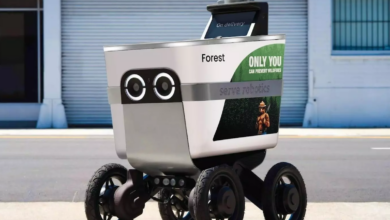New print and wrap shops have lots of decisions to make when it comes to working with printers and vinyl material for their vehicle, wall, and window wrap applications.
The first thing they’ll want to consider is their primary customer demographic and the size of the jobs they’ll be requested to handle.
“You need to research the market in your area and the potential type of signage and wrap projects you’ll likely receive on a regular basis,” said Kyle Payne, creative director for HEXIS AMERICAS, a Lawrenceville, Georgia-based manufacturer and distributor of vinyls and self-adhesive films. “Once you know the general scope of your future work, you can then decide which machine can handle the majority of these projects, and whether a secondary printer may be worth the investment versus relying on a partner company to handle special projects.”
Ink type
There are four main types of commercial printers: solvent, eco-solvent, UV, and latex, with names referring to the ink type.
“Generally speaking, eco-solvent print platforms tend to be slightly less expensive from an initial capital expense standpoint,” said Tim Dinneen, industrial printing specialist at Brother International Corporation in Bridgewater, New Jersey. “Latex and UV ink platforms tend to be slightly higher priced, but allow for a much faster workflow and almost instant lamination, in addition to being more environmentally friendly.”
One way to reduce the cost of the equipment purchase is to attend a trade show, where large companies bring in new model machines — the purchase of a floor model can cut off thousands of dollars from the retail price.
“Look at every brand, look at their technical specs and compare each one, and look at your own business and what you want to be able to do with your printer,” Payne said. “Look at what the manufacturer offers to make informed decisions.”
Also become familiar with the substrates to be used and understand the applications, whether a medium or longer-term job, the type of surface and if it’s contoured or not, and the inks and their qualities.
“Latex water-based ink technology, in particular, is already a proven and prevalent choice in the vehicle wrap industry,” Dinneen said. “Cast vinyls are the preferred substrate for vehicle wraps with each major media manufacturer having offerings that vary the adhesion strength, air flow (important during application to ensure there are not air bubbles and pockets), repositionability, and more. You will also want to ensure the media’s compatibility of with your printer’s ink type.”
Preferred inks for microperforated films for window graphics include solvent, eco-solvent, and latex, while printable chrome film is currently limited to UV and latex inks — with the latex, the ink needs a separate overcoat that can be turned off for printing to prevent delamination of the film. The UV inks also need reinforced laminate to be able to sit smoothly on the surface of the vinyl and to prevent any air gaps.
Alternatively, solvent and eco-solvent inks provide a better color reproduction with more depth to each color, but they require lamination to achieve similar or better durability as latex and UV options, which slows down workflow, Payne said.
For same-day or quick turnaround prints, latex, or UV inks are the better option, since the inks are cured once dry, Payne said. The chemicals used with solvent inks need time and proper ventilation for outgassing to prevent bubbling of the laminate or pigments being forced through the film onto the underlying substrate, he said. Eco-solvent inks have safer chemicals for the outgassing, but then laminating also can’t be done immediately, he said.
Another way to decide is to look at the abilities of the printer. Any printer can handle general signage, but for full wraps, special attention should be given to the compatible generations of UV and latex inks, which in recent years have had newer formulations to improve flexibility and prevent cracking when being stretched over complex surfaces. Older versions of latex and UV inks can be too rigid, whereas all solvent, eco-solvent, and resin inks are more pliable.

Quality
“Quality, color gamut, and speed are the top three things to consider when looking to purchase a signage printer,” said David Lopez, product manager of Professional Imaging for Epson America, Inc., in Los Alamitos, California. “Having a wide color gamut is very important, especially if you want to hit specific brand colors.”
Quality, though, has to be balanced against speed, since a faster production rate means a slightly lower print or color quality, Lopez said. Wraps need to have a laminate to protect them from weather and wear and tear, so if solvents are used, they have to be outgassed before lamination. This prevents bubbles from being trapped between the laminate and vinyl, which would reduce the quality. With resin, which is water-based — Epson sells their printers as resin — lamination is immediate, since a post-cure heater evaporates the water inside the ink when it’s printed onto the vinyl.
“As soon as it’s out, you have a product that’s finished. That’s why a lot of people opt for resin or latex,” Lopez said. “But there’s give and take. A byproduct of immediate lamination is there’s less of a color gamut.”
Besides ink and the type of printer, it is also important to consider the workflow and software, Lopez said. The Epson Cloud Solution PORT, for example, is an online cloud-based system connected to the printer that provides data on ink usage, cost calculations, and operation needs, such as low ink.
“Just do the research and see if there’s something you’re going to be able to grow with, so you don’t have to keep purchasing,” Lopez said.
Sizes
Printers come in different sizes, as large as 63″ or 64″ for eco-solvent and UV printers, while all four ink types come in 54″, going down in size from there — the smaller sizes put limitations on the type of media that can be printed. Smaller media can be put on the large printer.
“If full vehicle wraps are in the mix, a 64″ printer can provide a great solution as you’ll be able to print panels to cover the width of most hoods and trunks, where narrower printers will force you to create a seem or overlap to fit the width,” Dinneen said.
Vinyl film types
The vinyl for the machines varies, too, and manufacturers offer a wide range of film types and sizes to help installers handle any possible project. The main types of printable vinyl include monomeric designed for flat surfaces like windows and floors, polymeric for simple curves and contours, and cast for full wraps. Monomeric has the shortest lifespan of four to six years, while polymeric lasts about six to eight years and cast, eight to 10 years, varied by environmental factors and the type of ink printed onto them.
Resolution
Another factor to consider is the resolution capability, which can be as high as 2,400 X 2,400 DPI, or the number of micro-droplets of ink per square inch. The higher the resolution, the more ink that’s required, plus a longer print time, such as hours for the highest level and minutes for 600 or 720 DPI. Anything with less than a 720 DPI can be used for a test run or color check.
Also something you need to consider is the number of printheads — a single one is less expensive but prints at half the speed, and a dual printhead is able to continue operating if one of the heads fails. Printers can also have dual operations, such as a printer and plotter combination, which adds a cutting function using a knife to cut out complex graphics.

Safety
There are also safety concerns and speed and labor costs to consider versus the cost of maintenance — each machine has daily, weekly, and longer term recommendations for upkeep, and most companies have a service offer for emergencies. Payne recommends printers be cleaned weekly on top of using the printer’s programmable cleaning routines, including cleaning around the printhead and waste ink areas, which are primary needs, followed by making sure the vacuum holes and the back hoses are free of dust.
“If you do that, you will never have to call a service company outside of a part failing,” Payne said. “Daily maintenance saves thousands of dollars down the road in parts and service calls.”
Some manufacturers sell printers with printheads and ink that are made by the company, which helps improve product longevity.
“We have customers today that are still ordering ink for printers that are 12 years old. They did really good maintenance to make sure it lasts a very long time,” Lopez said. “As long as they do the recommended maintenance and take care of it and clean it, it can last 10 years.”
Epson recommends printers be cleaned monthly or if heavily used twice a month. Decals inside the cover provide cleaning instructions for all the parts and around the outside of the printhead.
“We’ve made it really, really easy,” Lopez said.
Another consideration is consumables, such as durability of ink heads and UV bulbs and the ability of waste ink to be cleaned and reused.
“Every printer has its own set of consumables,” Payne said. “Maintenance is importance, so understand what the wear and tear will entail before you make a purchase.”





